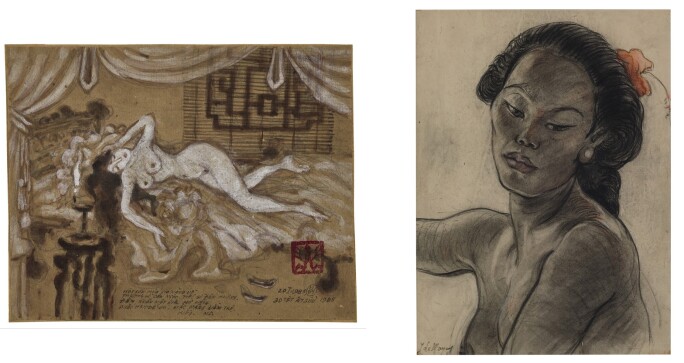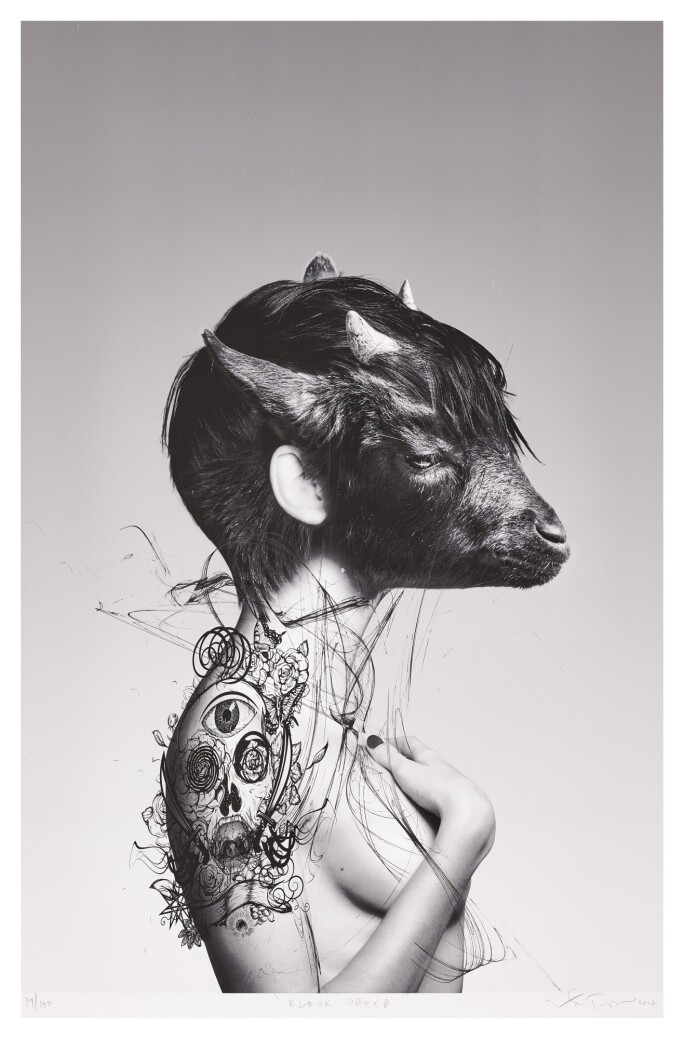It is impossible to overstate the importance of paper, how it changed the course of human history. For all its qualities, the humble medium has become underappreciated in the digital age. Its ubiquity (and waste) has perhaps contributed to the perception that paper should be disposable and regarded as something of low value. But some Southeast Asian artists have returned to the medium, creating stunning examples that prove these prejudices wrong.
Paper can be a chameleon, looking dramatically different depending on style and technique. Flowers and Chicken by one of Singapore’s most well-known 20th century painters Chen Wen Hsi demonstrates the artist’s expressive brushwork, referencing traditional Chinese ink painting in his depictions of flowers and birds. In contrast, Filipino artist Ronald Ventura’s Black Sheep splices the head of a sheep onto a woman’s naked body. It’s a haunting hyperrealist work which explores ideas on what it means to be animal or human.
Fossils and Ephemera. Evolution and natural history recur in much of Filipina visual artist Geraldine Javier’s multi-media works and installations. The Piltdown Man refers to an infamous anthropological hoax, and the artist created what appears to be a series of fossilized remains using impermanent materials – paper, tatting and leaves. The series was exhibited in the exhibition originally titled “Playing God in an Art Lab,” which suggests her provocative approach to creation.

Sketches of Daily Life. Indonesian artist Sudjana Kerton's sketches capture the events and reality of daily life. Each image is appealing because of the love of country the artist carries through in his works. Similarly, scenes of daily life in Vietnam are memorialized in an album of watercolors created by the North Vietnamese School. Inscribed and dated 1890, Sketches of Daily Life and Religious Ceremonies in the North of Vietnam, Nam Dinh hold a group of 21 gouache paintings on paper, elucidating Vietnamese traditions and culture during that period.
An Intimate Look. In Nude, Ngyuen Tu Nghiem uses European Post-Impressionist techniques to depict subjects and stylistic elements that are distinctly Vietnamese. It is an intimate scene in a bedroom, revealing a woman who is reclining languorously across the bed. Nudes were considered taboo in Vietnam during Nghiem’s time, however the artist's appreciation is apparent in the grace with which he explores the shapely curves of her body. In Portrait of Ni Pollok, Belgium-born Adrien-Jean Le Mayeur de Merprès, shows the Legong dancer who would be his lifelong model and muse. Le Mayeur was a self-declared impressionist who became a pioneering Indo-European artist, and lived in Bali for the later part of his life. His works are admired for combining the very best of Western Impressionist approaches and a reverent eye of the Balinese landscape and its people.

These works on paper and more are featured in the Modern and Contemporary Southeast Asian Art Online auction, which will be held through 4 December.






